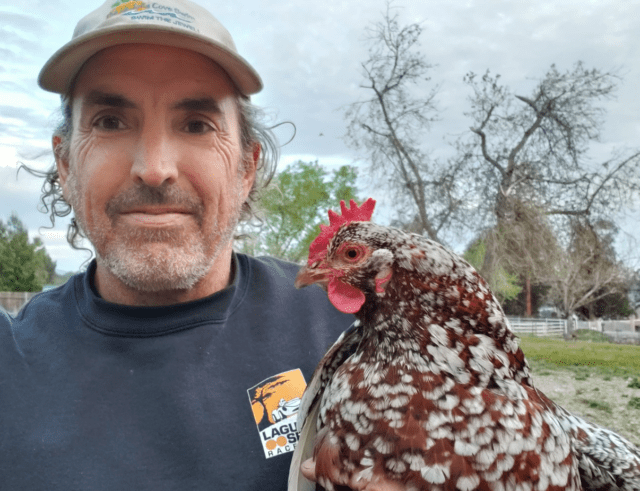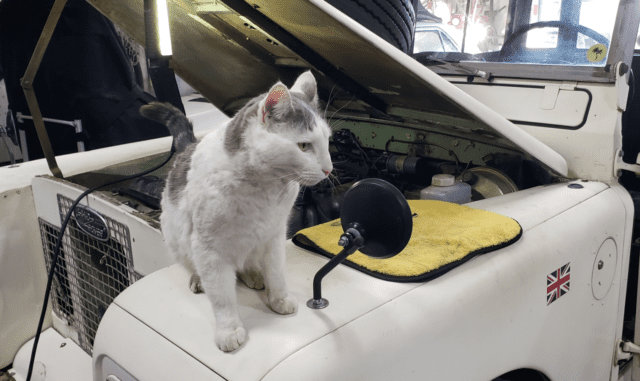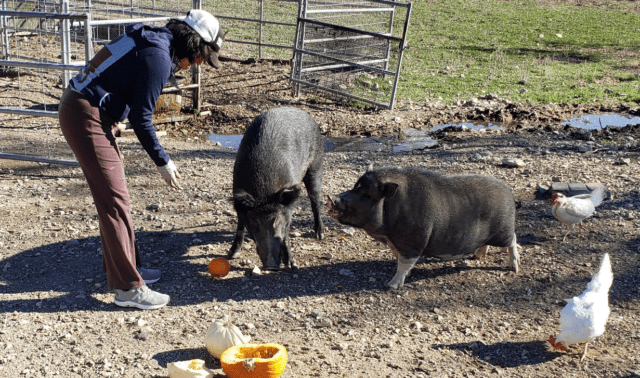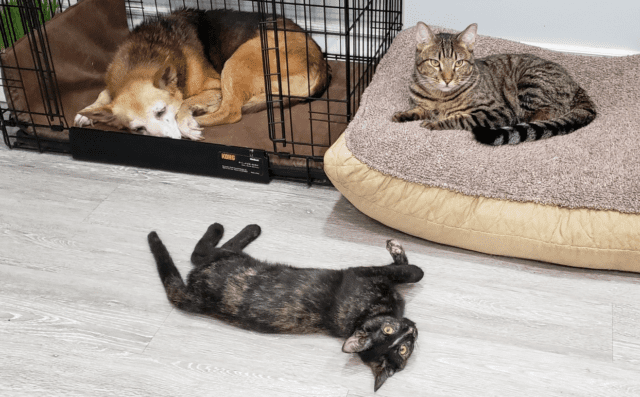
May 12, 2022
Renaissance man: Edison’s new EV Infrastructure Lead talks successful corporate strategies for fleet electrification, vintage cars, and pot-bellied pigs
By Elana Knopp, Senior Content Writer

In this article, Simon Horton, who recently joined Edison Energy as an EV Infrastructure Lead, discusses the growing momentum across the vehicle electrification sector, creating electrification strategies for corporate fleets, and the importance of multi-stakeholder buy-in.
Horton has extensive experience in assessment, design and construction of utility-led and client requested EV infrastructure projects; implementation, permitting and implementation experience in both the public and private sectors; and serves as an industry subject matter expert for infrastructure deployment at medium and heavy-duty sites including transit, cargo handling, ports and airports, and over-the-road and off-road vehicles.
It’s hard to think of a time that’s been more exciting for the electric vehicle sector. Global market revenue for EVs stood at $105 billion in 2021. By 2028, the total global EV market is estimated to reach a whopping $354.80 billion.
It’s also a great time to be at Edison Energy, says Simon Horton, who recently joined the global energy advisory firm as an EV Infrastructure Lead. Horton, who hails from Edison’s sister company Southern California Edison (SCE), will be working with clients to develop and implement electrification strategies for corporate fleets.
“There are these enormous strategy pieces upfront,” Horton said. “Once we’ve gotten a client to that point, then the idea is to actuate that plan. And that is where I will take over and the team will manage the engineering and design, site layout, integrate the strategy with the physical locations, assist with setting up procurement for the charging electronics, and the software to manage it. And then ultimately take it through the design, permitting, and shovels in the ground where we actually build operational projects.”
Horton is currently leading the team that can engineer and construct these projects.
“We’ll meet clients wherever they are in their journey,” he said. “EV transition and EV infrastructure is not a one-time shot. If you’ve got a fleet of 100 vehicles, the infrastructure to support those–the chargers and the utility connections should be done in an incremental fashion just like the vehicles are transitioned in an incremental fashion. That creates a business model that allows us to be in a cyclical pattern with that client, taking them back through the strategy periodically to look at where technology has advanced, whether infrastructure styles have changed, or if evolving operations change their business model.”
This enables Edison to ascertain whether clients are expanding, contracting, or taking on new markets, how that impacts operations, and the type and volume of infrastructure necessary.
“We can help them adjust periodically so that they don’t overbuild and have stranded assets,” Horton said. “It also creates a business model for us to support that client beyond just a single installation.”
An energized market
In February, the U.S. Department of Transportation and Energy announced that nearly $5 billion will be made available under the new National Electric Vehicle Infrastructure (NEVI) Formula Program, established by the Biden administration’s bipartisan infrastructure law to build out a national EV charging network.
The total amount available to states in 2022 under the NEVI program is $615 million.
The availability of these funds, coupled with increased decarbonization targets and mandates across the public and private sectors, has created increased momentum throughout the EV sector.
“There’s a tremendous amount of energy in the market to get this done, to make the transition,” Horton said. “The challenge is understanding the drivers and being able to create an offer that addresses those drivers. There are some fleets where the corporate entity has very succinct sustainability goals. They recognize that transportation electrification is a huge part of reducing their carbon footprint, so they’re very driven to make it happen. That’s the ideal client.”
A key piece of the puzzle is figuring out all the stakeholders very early on in a client organization, says Horton.
“You need to bring all those people together,” he said. “You can’t create a successful strategy for electrification if you don’t have everybody on board–from the key decision makers all the way to the guy that’s standing in the fleet yard where the vehicles park. Because if that person doesn’t buy into it, they’re going to put up roadblocks every step of the way.”
Wired that way
Horton has had a long and storied relationship with cars. As a middle-class kid growing up in rural Ohio, Horton and his brother started fixing cars out of necessity.
“When it was time to get a car, it wasn’t ‘Let’s go down to the dealer and buy a car,’” Horton said. “It was ‘Deliver some newspapers and when you’ve earned enough money, you can go buy a used clunker.’”
The first car Horton worked on was an old, rusty VW bug–which he successfully got up and running.
“I found that I had a knack and I enjoyed it,” he said. “I got to the point where I would buy older cars and clean them up, get them running, do light restoration, and I’d sell them for a profit.”
Eventually Horton was bringing in enough money to buy “cooler” cars, then restore and sell them.
“That’s how I put myself through university,” he said. “Then I started setting my sights on more interesting and rarer cars.”
Horton’s collection has grown considerably. He’s currently restoring about 25 cars, which he keeps in a large barn on his several-acre property in the foothills outside of Los Angeles. Influenced by his British parents and spending a lot of time in Europe as a child, Horton says he is partial to European cars from the 60s and 70s. His collection includes three Porsches, a handful of BMWs, a Land Rover, an MG, and several American cars, including a Corvette.
Giving back
Horton also uses his expansive property for another, very special purpose–an animal rescue.
“I’ve always been an animal lover, even as a kid,” he said. “I was the kid who found the baby bunny walking home from school and I would say, ‘Mom, can we keep it?’ When I bought my first house, I went to a local dog rescue, and I rescued a dog. It kind of snowballed from there.”

Horton with one of his many feathered friends. Photo Credit: Simon Horton
This love was passed down to his daughter, who one year asked for either a 1968 Ford Torino station wagon for her birthday—or a pig.
“I thought, ‘Well, that’s very specific,’” Horton said. I wasn’t buying her a station wagon, so I looked into the pig situation.’”
Along came a rescued pig, followed by the purchase of his current property, which quickly turned into a haven for animals.

Mr. Pink, one of Horton’s several rescue pets, also enjoys working on vintage cars. Photo Credit: Simon Horton
“It started with, ‘I’ll foster animals until we find permanent homes,’” Horton said. “Many times, I was a foster failure, and the animals would just stay with me. I had a real soft spot for special needs animals. Whenever there was a special needs animal that couldn’t be placed, we adopted them.”
He runs the refuge with his longtime partner. The pair now care for two pigs, more than 30 chickens–all rescued from chicken factories–three ducks, two dogs, and seven cats–including a three-legged cat and another who is blind.
“My partner–she’s exactly the same,” he said. “When it comes to animals, we’re peas in a pod. We love it; it’s like therapy. The animals know that they found somewhere special, and they give us as much as we give them.”

Horton’s partner feeding pet pigs Lucy and Ned. Photo Credit: Simon Horton
Horton’s work with animals seems to fit into his broader mission of making a difference.
“I have these auspicious goals that we’re going to leave the planet somewhat better than we inherited it,” he said. “I think it was Obama that said that we’re the first generation that’s feeling the effects of climate change and we’re the last generation that can make a difference. I feel very strongly about that. I want to make sure that my children, as they start their own families, can enjoy this planet as much as I have.”

19-year-old rescue mascot dog Sadie, along with three-legged cat Laz and his buddy Sid. Photo Credit: Simon Horton
Click here to explore previous installments in our Edison Plugged In Series and stay tuned for the next feature in the series!
Join Our Mailing List
Let us meet you where you are in your Transportation Electrification journey.
Get connected with our team.
Learn More



